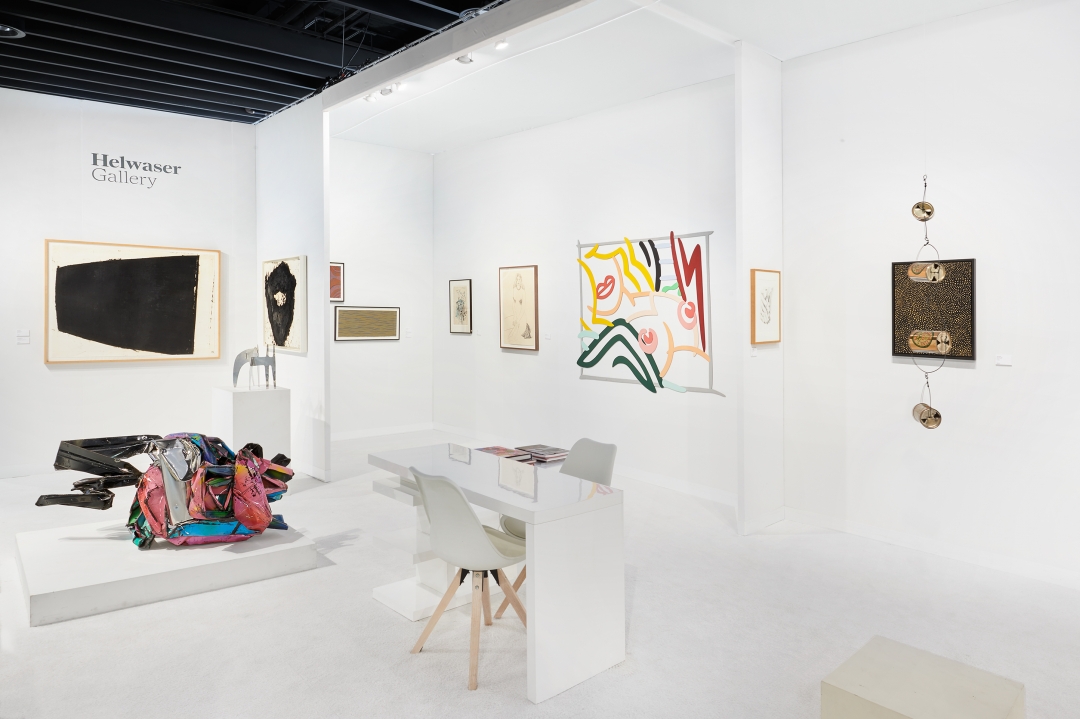-
Grossman LLP Achieves Summary Judgment Victory On Behalf of Helwaser Gallery In Dispute Over Calder Stabile
01/30/2020
 This week, a federal court handed a decisive victory to the Helwaser Gallery and its owner, Antoine Helwaser, in a long-running dispute over a sculpture by famed artist Alexander Calder. The summary judgment decision, penned by Judge P. Kevin Castel of the Southern District of New York, overwhelmingly accepted the arguments advanced by Grossman LLP on behalf of Helwaser.
This week, a federal court handed a decisive victory to the Helwaser Gallery and its owner, Antoine Helwaser, in a long-running dispute over a sculpture by famed artist Alexander Calder. The summary judgment decision, penned by Judge P. Kevin Castel of the Southern District of New York, overwhelmingly accepted the arguments advanced by Grossman LLP on behalf of Helwaser.
The dispute centered on a Calder work originally gifted by the artist to his lawyer, Paul L. Meaders, Jr. Upon Paul Jr.’s death, the work passed to his wife, Jane Meaders. When Jane died, her will named Meaders’s son, Paul Meaders III, as executor, and granted him broad discretion in administering her estate. The will did not expressly say what was to happen to this specific artwork; rather, it bequeathed all of Jane’s tangible personal property (with certain exclusions not relevant here), to Paul Meaders III and his sister, Phyliss, in “equal shares.”
After Jane’s death in 2001, Paul took possession of the work for many years, and eventually, in 2016, sold it to Helwaser. When Phyliss learned of the sale, she sued Helwaser, seeking the return of the work and arguing, among other things, that he did insufficient diligence and should have known that Paul was only part-owner of the work and did not have full authority to sell it without Phyliss’s permission.
After discovery, Helwaser moved for summary judgment, arguing that Phyliss’s claims were doomed because she had not shown she owned the work prior to the 2016 sale to Helwaser. The Court agreed with Helwaser’s counsel, Grossman LLP, that Paul, as executor, had broad power to deal with the work, including by selling the work and distributing the proceeds in equal shares to Phyliss and himself; distributing the work to Phyliss and giving himself a credit for one-half of the work’s appraised value; or distributing the work to himself and giving Phyliss a credit for one-half of the work’s appraised value. But Phyliss had not adequately proved that the work was distributed to her, nor that she received an actual half-interest in the work itself, rather than simply a beneficial interest that could be satisfied through an off-setting credit in the form of other estate property or cash.
The court also agreed that, while some of the paperwork accompanying the sale of the work from Paul to Helwaser listed Phylllis along with Paul in the work’s provenance statement, that was not an admission that Phyliss had a real ownership interest, or even a half-interest, in the work, as opposed to a mere beneficial interest. Finally, the court noted that Phyliss never formally contested Paul’s administration of the estate, nor did she take any action to protect or assert control over the work, even though she knew Paul was considering selling it. If Phyliss believed Paul had breached his duties in his handling of the work, she had the option to seek relief in the New York Surrogate’s Court, which deals with estate disputes. But for purposes of this litigation, her claims against Helwaser could not stand, since she failed to put forward adequate evidence that she had an actual ownership interest in the work prior to its sale to Helwaser.
This week’s decision puts to rest a dispute that has lasted nearly two years, and serves as a reminder of the complex issues that can arise out of estates that include artworks. See Meaders v. Helwaser, Case No. 18-cv-5039 (S.D.N.Y.).
Art Law Blog
